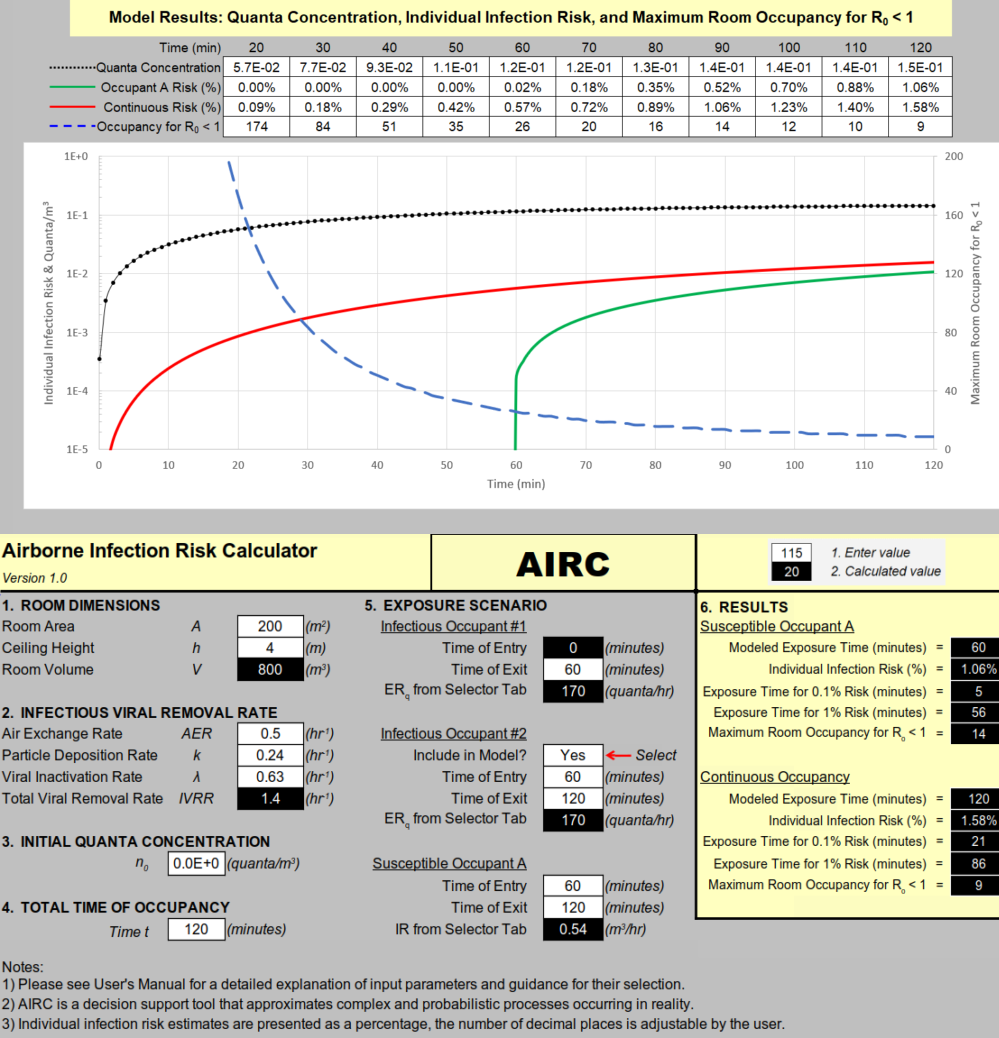The Airborne Infection Risk Calculator (AIRC) was developed by researchers at CUNY BPL, the University of Cassino and Southern Lazio Department of Civil and Mechanical Engineering (Cassino, Italy) and the International Laboratory for Air Quality and Health (ILAQH, Queensland University of Technology, Brisbane, Australia). AIRC is an airborne contagion modeling tool programmed in Microsoft Excel and designed to assist facility managers, building engineers, and public and occupational health professionals in prospectively evaluating individual infection and community transmission risks associated with specific indoor environments.
AIRC can help users address two primary questions related to the risks associated with occupying an indoor space when community transmission of an infectious airborne pathogen, such as SARS-CoV-2, is occurring:
- What is the potential infection risk associated with varying lengths of stay in the space?
- What number of occupants helps maintain a basic reproduction number (R0) less than one to prevent the exposure from further contributing to disease spread in the population.
The target users of AIRC are building managers, engineering consultants, and public, occupational, and environmental health scientists. Users should be proficient in Microsoft Excel and have a basic understanding of building systems and indoor air quality.
AIRC is based on the novel risk modeling approach developed for SARS-CoV-2 presented in the following papers:
Buonanno, G., Stabile, L., Morawska, L. Estimation of Airborne Viral Emission: Quanta Emission Rate of SARS-CoV-2 for Infection Risk Assessment. Environment International. https://doi.org/10.1101/2020.04.12.20062828.
Buonanno, G., Morawska, L., Stabile, L. Quantitative Assessment of the Risk of Airborne Transmission of SARS-CoV-2 Infection: Prospective and Retrospective Applications. Environment International. https://doi.org/10.1101/2020.06.01.20118984
A. Mikszewski, L. Stabile, G. Buonanno, L. Morawska. The Airborne Contagiousness Of Respiratory Viruses: A Comparative Analysis And Implications For Mitigation. medRxiv 2021.01.26.21250580. https://doi.org/10.1101/2021.01.26.21250580
